My Journey to Raw: Three lives changed. Thank you raw food!
This post is part of our “Journey to Raw” series, published on Wednesdays, and comes to you from Holly Abbandonato, MSc, BScENR, BSc, BA, a biology PhD Student who has worked at cat shelters in both Canada and Norway. Holly has a passion for cat nutrition and behaviour research and also enjoys photography, gardening, travelling and sharing knowledge with others.
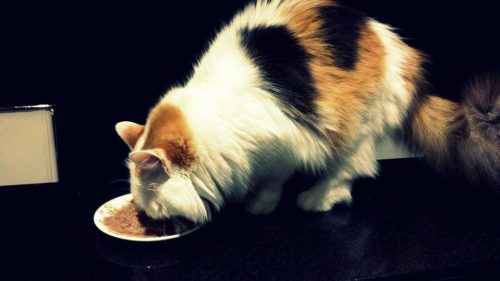 My Journey to Raw is a little unorthodox as it encompasses not only the journey of my furbabies to a raw diet, but the journey I took learning about cat nutrition through both the science and shared experiences. As a biologist (though a botanist), I had taken many zoology courses in the past and I was consistently taught that each species is adapted in a specific way to their environment and we can easily distinguish and understand them by examining these adaptations.
My Journey to Raw is a little unorthodox as it encompasses not only the journey of my furbabies to a raw diet, but the journey I took learning about cat nutrition through both the science and shared experiences. As a biologist (though a botanist), I had taken many zoology courses in the past and I was consistently taught that each species is adapted in a specific way to their environment and we can easily distinguish and understand them by examining these adaptations.
For instance, carnivores have short digestive tracts whereas herbivores have long digestive tracts (and often multiple stomachs too), specific types of teeth, feet and/or claws, but not until my investigation into cat nutrition and health did I ever think to apply it to our pets *sigh*.
Like many other “My Journey to Raw” stories, ours began in a similar manner: with sick cats. During the early 2000s, my companion, Lucky (RIP), who I had for more than half my life was constantly sick and our second cat, Black Bear, was acquiring new illnesses as she reached adult age. We have always been so responsible and careful with our pets.
We followed Veterinarian given advice – all indoor, all vaccinated as prescribed, all on a mainly dry diet. Yet all our cats had at least one chronic illness, low energy, poor teeth and matted or greasy fur coats.
How could this happen??
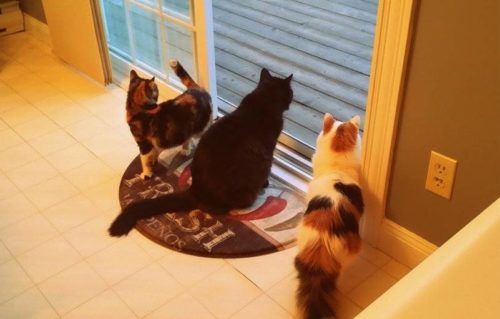 As we moved cities a couple times, we were able to work with new vets. What I continually noticed is that vets are wonderful at treating immediate health problems, sometimes entirely, and sometimes only the symptoms. BUT what irked me most is that they could not provide reliable advice for long-term health through nutrition. No matter what prescription diets they recommended, our cats were still getting dietary-based illnesses.
As we moved cities a couple times, we were able to work with new vets. What I continually noticed is that vets are wonderful at treating immediate health problems, sometimes entirely, and sometimes only the symptoms. BUT what irked me most is that they could not provide reliable advice for long-term health through nutrition. No matter what prescription diets they recommended, our cats were still getting dietary-based illnesses.
I was upset and angry that I couldn’t protect my babies. Once I started doing a little bit of reading, I began to find articles with advice contrary to common nutritional Veterinary practices (written primarily by vets themselves) and I also started reading about other shared experiences. Thus My Journey to Raw began in 2011 as I learned more about cat health, nutrition and now recently behaviour. What an exciting and controversial experience it has been!
As I investigated further, I was in shock as to how poor the food we feed to our pets both wet and dry, but especially dry is. Most typical pet foods are owned by huge corporations such as Procter and Gamble, Mars Inc, Colgate-Palmolive, etc. I felt so deceived and with the 2007/2008 melamine contamination these companies were literally poisoning our pets.
The more I learned, I realized that cats are biologically carnivores (makes sense right?) and not just facultative carnivores (like dogs), but they are obligate carnivores. Never forget that.
They should not be eating leftover grains (not fit for human consumption), or fruits and vegetables. They need decent quality meat (not diseased or euthanized) and they need it in the form their body is designed for. Raw, not cooked or canned or highly processed flavour enhanced pellets (yuck!).
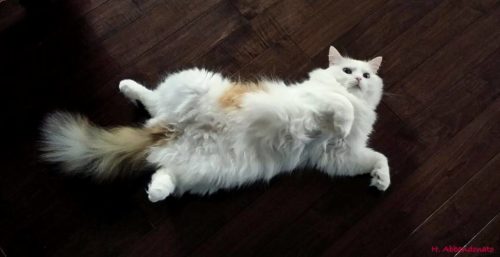
If you think about it – commercial pet food is just a way to use inedible meat, grain and vegetable leftover from agriculture production with the added synthetic vitamins and minerals to make it “balanced”. It is a system designed around profit and not health. I talked with countless owners all with pets with dietary-based illnesses such as diabetes, urinary tract problems, obesity, dental disease, chronic kidney disease, irritable bowel syndrome, and food allergies. Everyone was feeding either commercial generic pet food or commercial prescriptions food with no real success and only deteriorating pets.
It was time for a change!
Our raw experience, one kitty at a time.
Lucky (RIP 2011): Colonic impaction, matted fur, stud tail, dental disease, and chronic kidney disease (CKD)
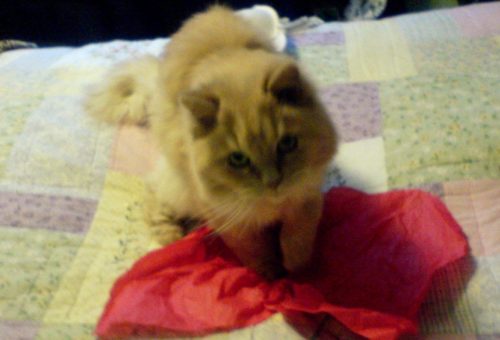 We had Lucky for 17 years. Unfortunately he never got the chance to try raw food. It wasn’t until the last year before his death that I started learning about cat nutrition outside the advice of vets. He was on high fiber prescription dry food most of his life and some wet food (at the end) but, he never got better only worse. Sadly, he was chronically constipated for most of his life and any diet changes would cause him to become impacted, and even his fiber food only slightly minimized it.
We had Lucky for 17 years. Unfortunately he never got the chance to try raw food. It wasn’t until the last year before his death that I started learning about cat nutrition outside the advice of vets. He was on high fiber prescription dry food most of his life and some wet food (at the end) but, he never got better only worse. Sadly, he was chronically constipated for most of his life and any diet changes would cause him to become impacted, and even his fiber food only slightly minimized it.
Thankfully my mom is a nurse and our vet trained her to dis-impact him so we didn’t have to go to the vet every month. His fur was terribly matted and oily, he developed stud tail in his later years and he had terrible dental disease with most of his teeth removed. As a result of adding lots and lots of water to his food, he was able to live happily with his CKD for 4 more years. I regret not getting the chance to feed him a raw diet.
Love and miss you Lucky aka Mr. Bigglesworth – our gentle lion <3
Black Bear: Feline Hyperesthesia, overweight, one kidney, allergies, fatty liver disease, itchy bumps, obsessive overgrooming
We got our Black Bear as a kitten and still to this day she is my best friend. We connected like no other – it may sound weird, but she is my kitty soul mate. When I was younger, we would play regularly together, she would chirp to me and she would sleep beside my head with her paw on my hand.
At the age of 6 months, she developed FHS (Feline Hyperesthesia Syndrome). At that time, she was fed exclusively Wellness chicken dry food. After this, we trusted our vet and started to feed her Royal Canin until the melamine recall caused us to change her diet further in 2008 to a limited ingredient prescription dry food. Over time she started to gain weight and at her worse was almost 20 lbs and very inactive. She ended up on weight management prescription food which didn’t do much and caused her FHS and itchy skin to get worse. We switched her to countless different prescription diets with no avail and nothing worked. She developed fatty liver disease after trying to put her on a “high quality” canned food, Ziwipeak, which was formulated at the time with too much fat. She was near death, but thanks to our amazing new vets managed to get through it.
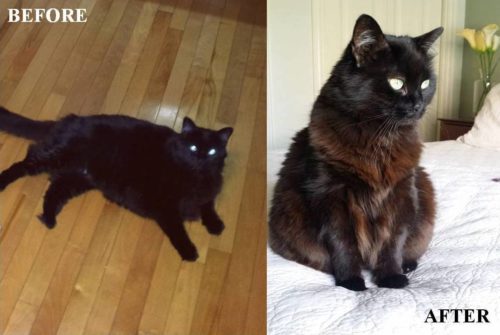 Finally, she was put on a canned venison prescription diet, in which many of her food allergies symptoms seemed to be controlled, but her fur, teeth and FHS were not. We started her on raw food in 2014 very slowly with our two new adoptees (Nathalie and Lisa) and what a change!
Finally, she was put on a canned venison prescription diet, in which many of her food allergies symptoms seemed to be controlled, but her fur, teeth and FHS were not. We started her on raw food in 2014 very slowly with our two new adoptees (Nathalie and Lisa) and what a change!
We gradually got her weight down to 14 lbs, she put on muscle, her FHS to this day is almost nonexistent, her overgrooming stopped and her belly fur is growing back, her coat shines, and she is very playful now even at the age of 13. We couldn’t be happier. Thank you so much Catcentric for the support and resources to make the change, and I would like to thank our current vet for being so understanding in our journey to raw.
Nathalie: Idiopathic cystitis
Nathalie (short-haired torbie) has been almost perfect in health, except a couple years back when she was eating canned food and there were a couple changes to her routine. She started having bouts of idiopathic cystitis. Basically, she was peeing blood and mucus, and she was struggling to pee. She went through the typical vet routine (extracted urine cultures, blood tests, mucus injections) with no permanent success. We have been able to eliminate it by increasing play time to build her confidence, and we changed her to a raw diet with added water to her food. Her idiopathic cystitis has cleared up, hopefully for good!
Lisa: Healthy! 🙂
Our little Lisa Lou (long-haired calico) has been illness free. Yipee! When we first got her she was underweight and had problems eating on her own. She was switched to raw fairly early in her life (same time as Nathalie, at about 3 years old) and she is happy, healthy, and like a little monkey filled with energy.
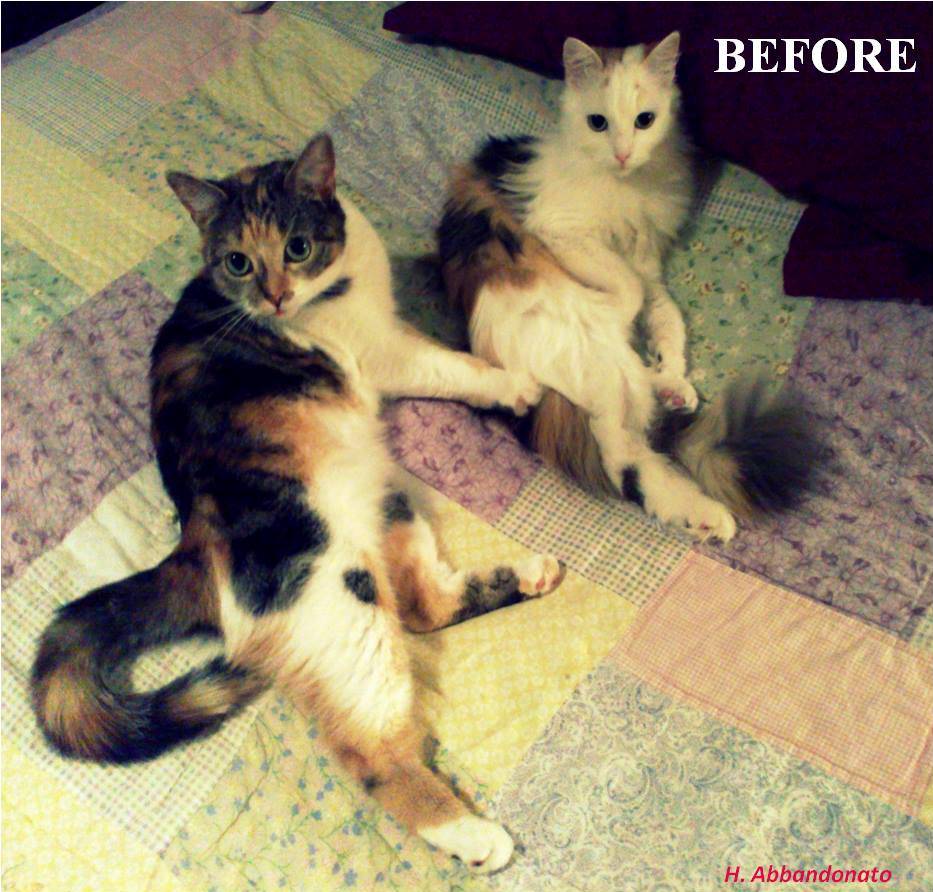
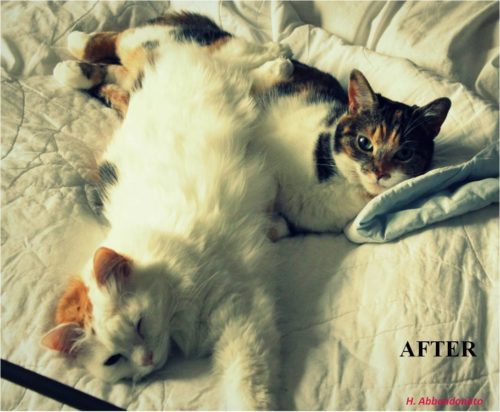
As a researcher by trade, I do my best to uncover and learn everything I can about cat nutrition and behaviour, so that I can provide further advice to other cat owners and do the absolute best I can for my now raw-fed clan. Thank you for reading our story <3
If you feed your kitties a raw diet and would like to see your story featured here, please contact me or leave a comment below.
And if you‘re interested in giving raw a try, check out our Raw Feeding and Transitioning Your Cat to Raw sections, and join the CatCentric group for help and support during your transition.
If you enjoyed this post or found it informative, please “Like” it, “Tweet” it, or share it using any of the buttons below. And don’t forget to check out our FB page, join the discussions in our awesome FB group and follow us on Twitter!

